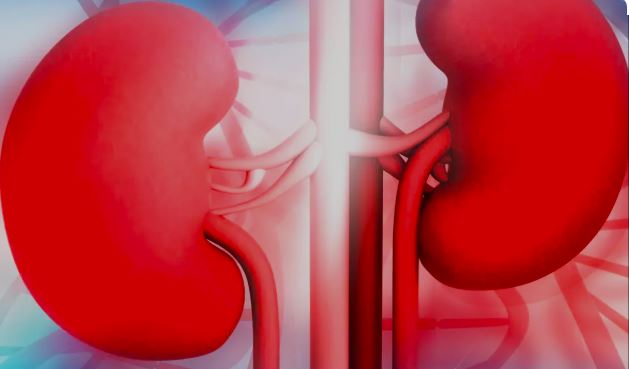
Chronic Kidney Disease (CKD) is a long-term condition in which the kidneys gradually lose their ability to filter waste products, toxins, and excess fluids from the blood. Unlike acute kidney injury, which develops suddenly, CKD progresses slowly over months or years. It is a global health problem affecting millions of people and is often called a “silent disease” because it can remain asymptomatic until advanced stages.
CKD is significant because it not only leads to kidney failure but also increases the risk of heart disease, stroke, anemia, and bone disorders. Early detection and management can slow its progression and improve quality of life.
The kidneys are two bean-shaped organs located on either side of the spine, just below the rib cage. Each kidney contains about a million filtering units called nephrons, which help remove waste products and balance electrolytes, blood pressure, and fluid levels.
Healthy kidneys perform several vital functions:
Filtering waste and toxins from the blood.
Regulating blood pressure by managing fluid and salt balance.
Producing hormones like erythropoietin, which stimulates red blood cell production.
Maintaining strong bones by balancing calcium and phosphate levels.
In CKD, damage to the nephrons reduces the kidneys’ filtering capacity, leading to the accumulation of toxins and fluid imbalances in the body.
CKD develops from various risk factors and underlying conditions. The most common causes include:
Diabetes Mellitus: High blood sugar damages blood vessels in the kidneys.
Hypertension (High Blood Pressure): Strains kidney blood vessels, reducing function over time.
Glomerulonephritis: Inflammation of kidney filtering units.
Polycystic Kidney Disease: Genetic condition causing multiple cysts in the kidneys.
Prolonged Obstruction: Blockages from kidney stones, enlarged prostate, or tumors.
Recurrent Kidney Infections (Pyelonephritis): Repeated infections scar the kidneys.
Other Risk Factors: Age over 60, family history of kidney disease, smoking, obesity, and certain medications (e.g., NSAIDs used long-term).
CKD often progresses silently. Early stages may show no symptoms, but as kidney function declines, patients may experience:
Fatigue and weakness
Swelling in the ankles, feet, or hands (edema)
Shortness of breath
Nausea, vomiting, or loss of appetite
Muscle cramps and twitching
Increased urination at night (nocturia)
Difficulty concentrating and confusion
Itchy skin
High blood pressure that is difficult to control
In advanced stages, symptoms become more severe, and complications such as anemia, brittle bones, and heart problems may arise.
CKD is diagnosed using a combination of clinical evaluation, laboratory tests, and imaging studies.
Medical History and Physical Examination: Reviewing risk factors such as diabetes, hypertension, family history, or use of nephrotoxic drugs.
Blood Tests:
Serum creatinine and estimated Glomerular Filtration Rate (eGFR) to assess kidney function.
Blood urea nitrogen (BUN).
Urine Tests:
Checking for proteinuria (albumin in urine), which is an early marker of kidney damage.
Urinalysis for blood, protein, or infections.
Imaging Studies: Ultrasound, CT, or MRI to evaluate kidney structure and size.
Kidney Biopsy (if needed): Small tissue sample taken to confirm the cause of kidney disease.
CKD is classified into five stages, based on eGFR, ranging from mild impairment (Stage 1) to kidney failure (Stage 5).
The goal of CKD treatment is to slow disease progression, manage complications, and improve quality of life.
Lifestyle Modifications: Healthy diet (low salt, controlled protein, adequate hydration), regular exercise, smoking cessation, and limiting alcohol.
Blood Pressure Control: Medications like ACE inhibitors or ARBs protect kidney function.
Blood Sugar Management: Strict glucose control in diabetic patients.
Anemia Management: Iron supplements, erythropoietin injections.
Bone Health: Vitamin D supplements, phosphate binders.
Fluid Management: Diuretics to reduce swelling.
Dialysis: Required when kidney function declines to less than 10–15% of normal.
Kidney Transplant: Replacing a diseased kidney with a healthy donor kidney, offering the best long-term outcomes.
Two main types exist:
Hemodialysis:
Blood is drawn from the body via a vascular access (fistula, graft, or catheter).
The blood passes through a dialysis machine, which removes waste and excess fluid.
Cleansed blood is returned to the body.
Typically done 3 times per week, 3–5 hours per session.
Peritoneal Dialysis:
A catheter is inserted into the abdomen.
Dialysis fluid is introduced into the peritoneal cavity, where waste products diffuse across the peritoneal membrane.
The fluid is later drained and replaced.
Can be performed at home, often overnight.
Step 1: Matching donor evaluation (living or deceased donor).
Step 2: Surgical removal of the donor kidney and implantation into the recipient.
Step 3: Recipient is placed on lifelong immunosuppressant medications to prevent rejection.
For patients undergoing dialysis or transplant:
Dialysis: Requires strict adherence to schedule, dietary restrictions (low potassium, sodium, phosphorus), and regular monitoring.
Transplant:
Hospital stay for recovery and close observation.
Lifelong immunosuppressive therapy to prevent organ rejection.
Regular follow-up to monitor kidney function and prevent infections.
Rehabilitation focuses on nutrition, infection prevention, managing blood pressure, and psychosocial support.
Dialysis Complications: Low blood pressure, infection at access site, cramps, fatigue.
Transplant Complications: Organ rejection, infection, side effects of immunosuppressants (diabetes, hypertension, increased cancer risk).
CKD-Related Complications: Cardiovascular disease, anemia, bone weakness, electrolyte imbalances, and eventually kidney failure.
The outlook for CKD depends on early detection, underlying cause, and adherence to treatment. With appropriate management, progression can often be slowed, allowing many patients to live full and productive lives. However, untreated CKD eventually leads to end-stage renal disease (ESRD), requiring dialysis or transplantation for survival.
Seek medical advice if you experience:
Persistent swelling of legs or face
Uncontrolled high blood pressure
Fatigue or weakness not improving with rest
Changes in urination (frequency, color, or amount)
Shortness of breath or chest pain
Family history of kidney disease with unexplained symptoms
Early consultation can prevent irreversible damage.
Chronic Kidney Disease is a progressive but manageable condition that requires lifelong attention. Understanding its causes, recognizing early symptoms, and undergoing regular screening are vital in preventing complications. With timely intervention—through medication, lifestyle changes, dialysis, or transplantation—patients can achieve a better quality of life. If you notice warning signs or are at risk, consult a healthcare professional promptly for evaluation and guidance.
Chat With Me